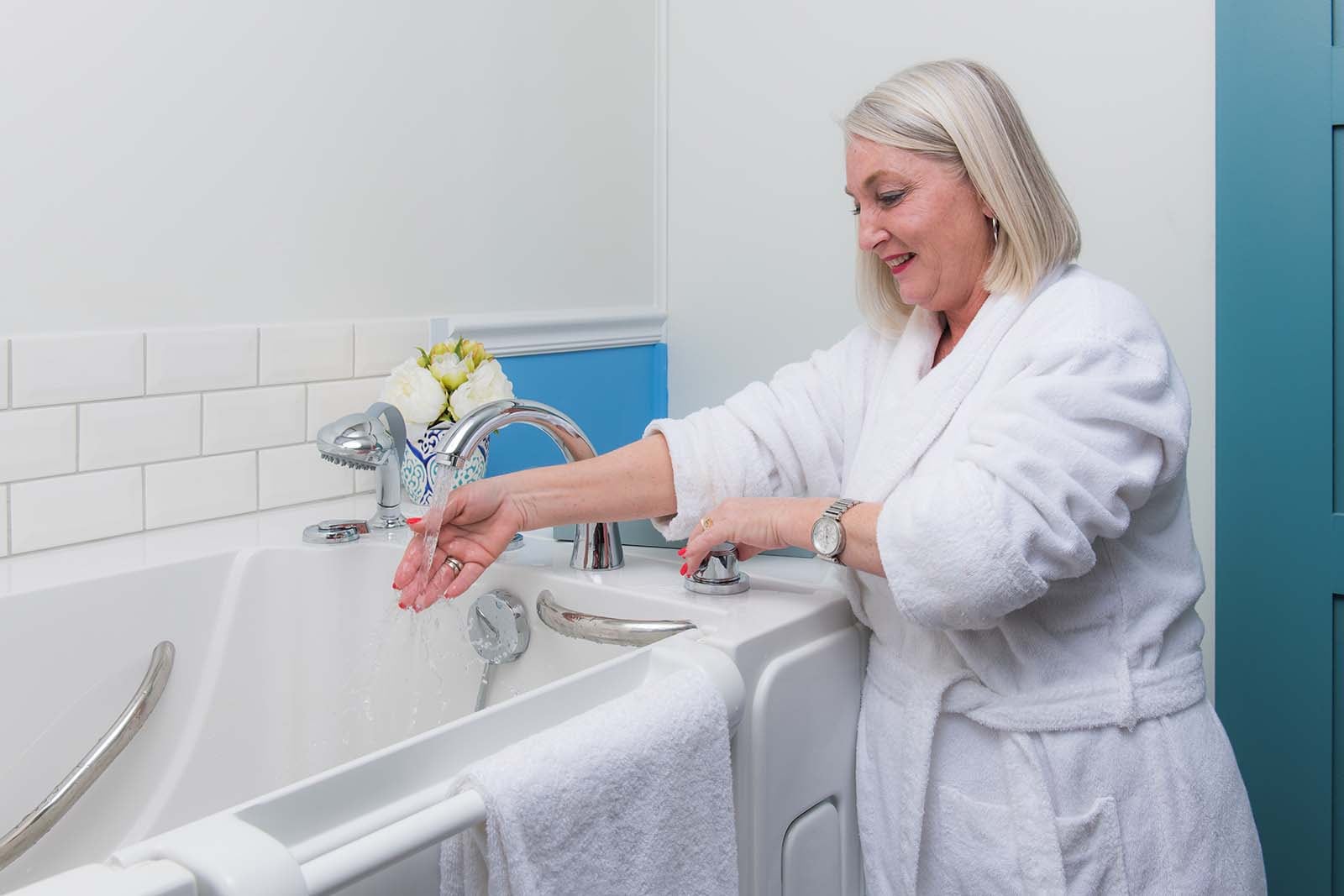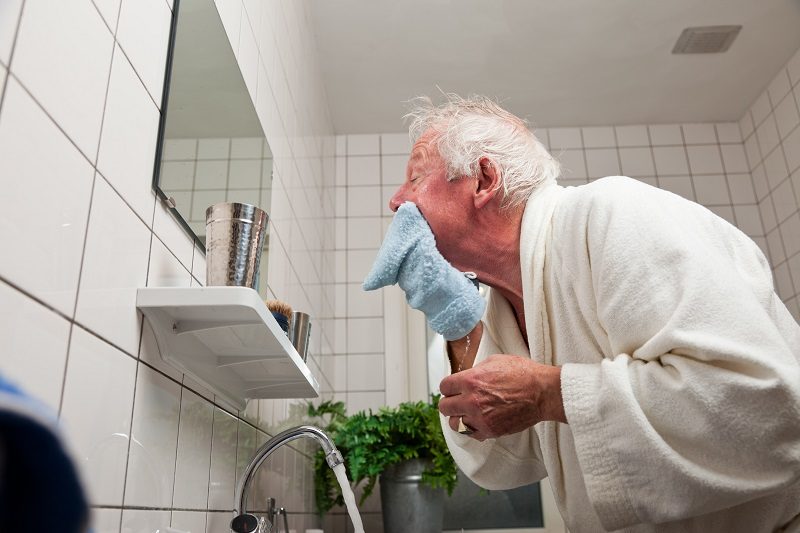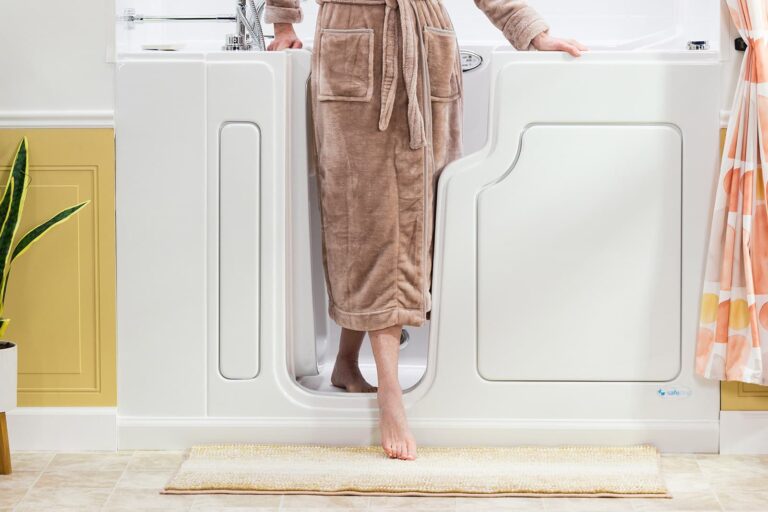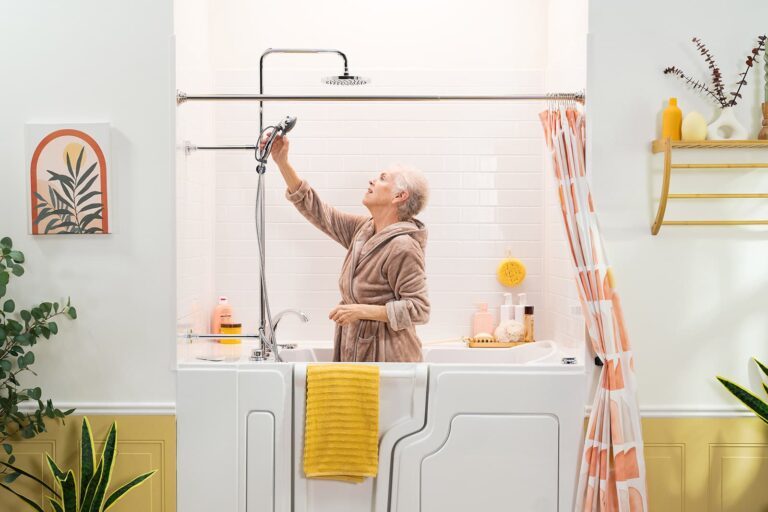A Caregiver’s Guide to Bathing and Showering a Person With Dementia

Bathing can be a challenging daily occurrence for people with dementia and their caregivers. Though not everyone with dementia will have trouble with bathing, for some it is a frightening, uncomfortable or embarrassing experience. This discomfort can make some prone to verbally or physically resisting attempts to bathe, which can be upsetting and risky for themselves and their caregivers.
Though each situation is unique, there are ways to guide people with dementia through bathing or showering, making it a comfortable, predictable experience. To find the right setup for your specific situation, you may go through some trial and error. We want to shorten that trial period so you can quickly find the right fit for your family, so here are our tips on reducing discomfort for people with dementia when bathing and showering.
Prepare the Bathroom in Advance
Lay out everything you need in advance, so that you and your loved one can go through your routine safely and without surprises. Here’s some ideas on how to set the bathroom up before a bath:
- Warm Up the Bathroom: Seniors get cold much more easily than younger people, which can add another layer of discomfort to bathing. Set up a space heater, turn up the thermostat or put towels in the dryer for a few minutes to create a warmer environment for bathing.
- Prepare Towels: Keep plenty of large towels on hand. These can pull double duty to make a shower seat more comfortable, prevent feet from touching cold floors or provide immediate warmth after bathing.
- Move Supplies Within Reach: Shampoo, soaps, washcloths and other bathing supplies should all be set in the same places around the shower or tub for familiarity and easy access.
- Monitor Water Temperature: Always check water temperature before your loved one steps in to bathe, even if they draw their own bath. Cold water is uncomfortable, but hot water can be dangerous. Our tubs come with anti-scald technology so that you don’t need to worry about scalding.
Support Your Loved One
If your family member struggles with bathing and demonstrates uncharacteristic behavior, they may be scared. Be patient and respectful with them, communicating each step calmly and allowing time for your loved one to understand before proceeding. Allow them to say no to any step in their bathing routine if they aren’t comfortable—you can try approaching that step again later if need be. Most importantly, allow them to participate in the bathing process. Whether your loved one washes their own hair or holds the shampoo bottle while you wash, simply participating in what’s happening gives them a measure of control during the process.

Use Positive Reinforcement
Bathing may be difficult for your loved one. Positive reinforcement takes some of the sting out of the experience. Lead them to bathe while talking about something fun you’ll do afterward, and continue to mention it while they bathe. Keep a close eye on the language and tone you’re using, as these can go a long way. Using a calm, positive tone and “we” instead of “you” will remind your loved one that you’re there to support them and that you’re in this together.
Enjoy $1,000 Off Your Walk-In Shower + Free Toilet, Including Installation!*
Request a free quote today!
Reduce Pain Points
Over time, you’ll discover points of friction around bathing for your loved one. Whether that’s struggling to remain stable in the shower, being scared of the bathwater’s depth or another concern, the best thing to do is find a safe, feasible workaround. If your shower doesn’t have a built-in seat, shower chairs are a good alternative. If your family member is fearful, try singing together or playing soft, familiar music. For concerns over water, fill the tub about two inches and see how your loved one reacts. A handheld shower wand works well for concerns about water intensity or depth. Walk-in tubs also ease worries over depth, since they’re filled after the person is seated. Above all else, do what makes your family member feel safe and comfortable. You want them to see bathing as a relaxing activity. Whatever steps need to be taken to calm their worries, take them.
Consider Bathing Alternatives
Adapting the bathing process to whatever works for your family member is crucial. You may need to adjust your definition of bathing to the realities of your loved one’s emotional and physical needs. Portioning out parts of cleaning, like washing their hair one day and their body the next, or doing a simple sponge bath some days, may be part of your new routine. Ultimately, getting as clean as possible safely and comfortably is the goal.

Establish a Routine
Creating a routine and sticking with it is the best way to maintain your family member’s cleanliness, independence and confidence going forward.
- Maintain Consistency: If your loved one has always enjoyed a shower at night, keep that routine in place. Go with what’s easy and familiar for them.
- Wash in Order: Use the same routine during each bath. Wash the same body parts in the same order every time and store all items in the same spots.
- Take Out Any Guesswork: Let your family member do as much as they’re able, providing gentle assistance when needed. They likely remember what to do, even if not the exact order.
Provide a Safe Bathing Environment
Your loved one’s safety and well-being comes first when bathing— that’s something we’ve built our reputation on for over 15 years. We’ve provided families like yours with safe bathing solutions to make everyday routines simple and sustainable. Read up on bathroom safety tips for seniors for ideas on creating a secure place for your family to bathe comfortably and safely.


